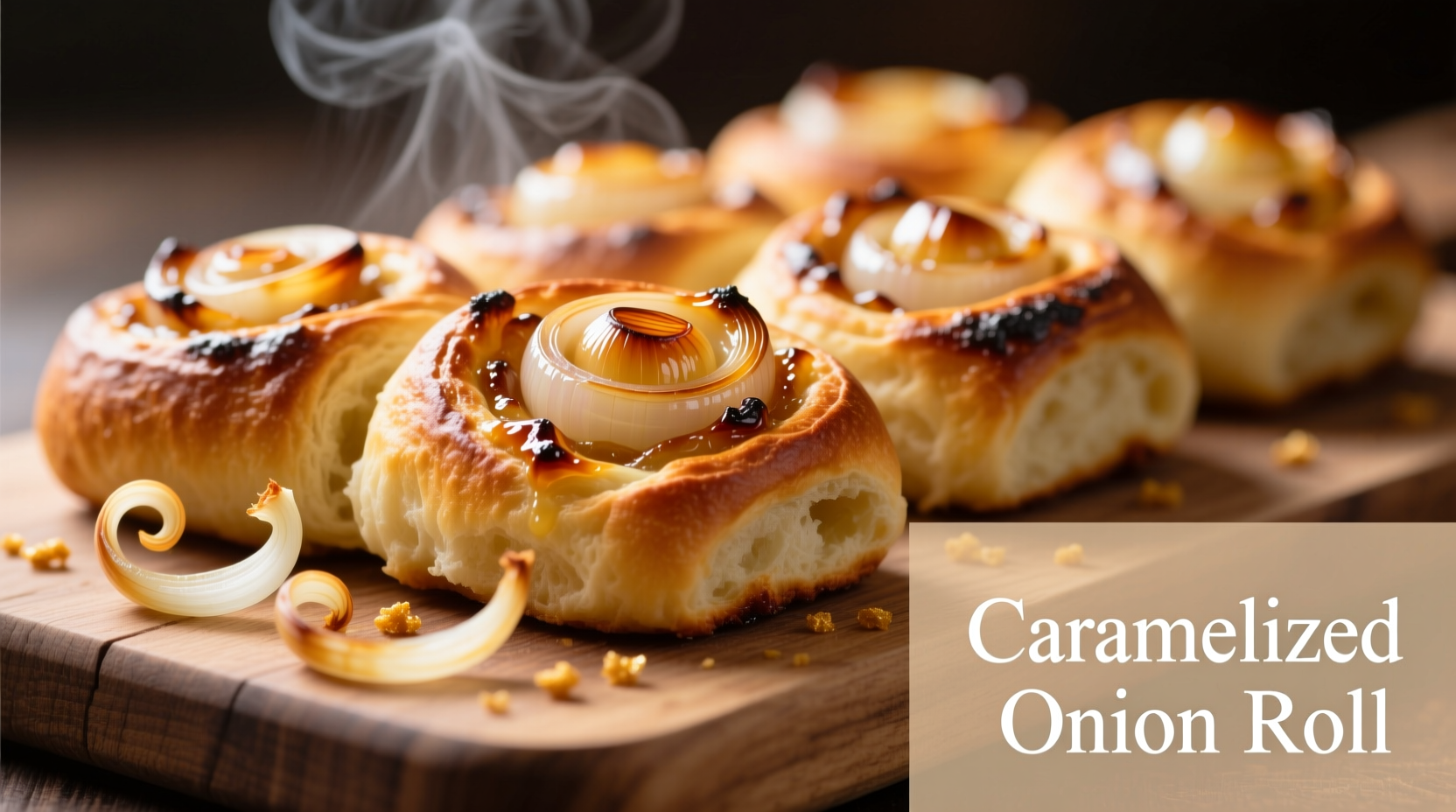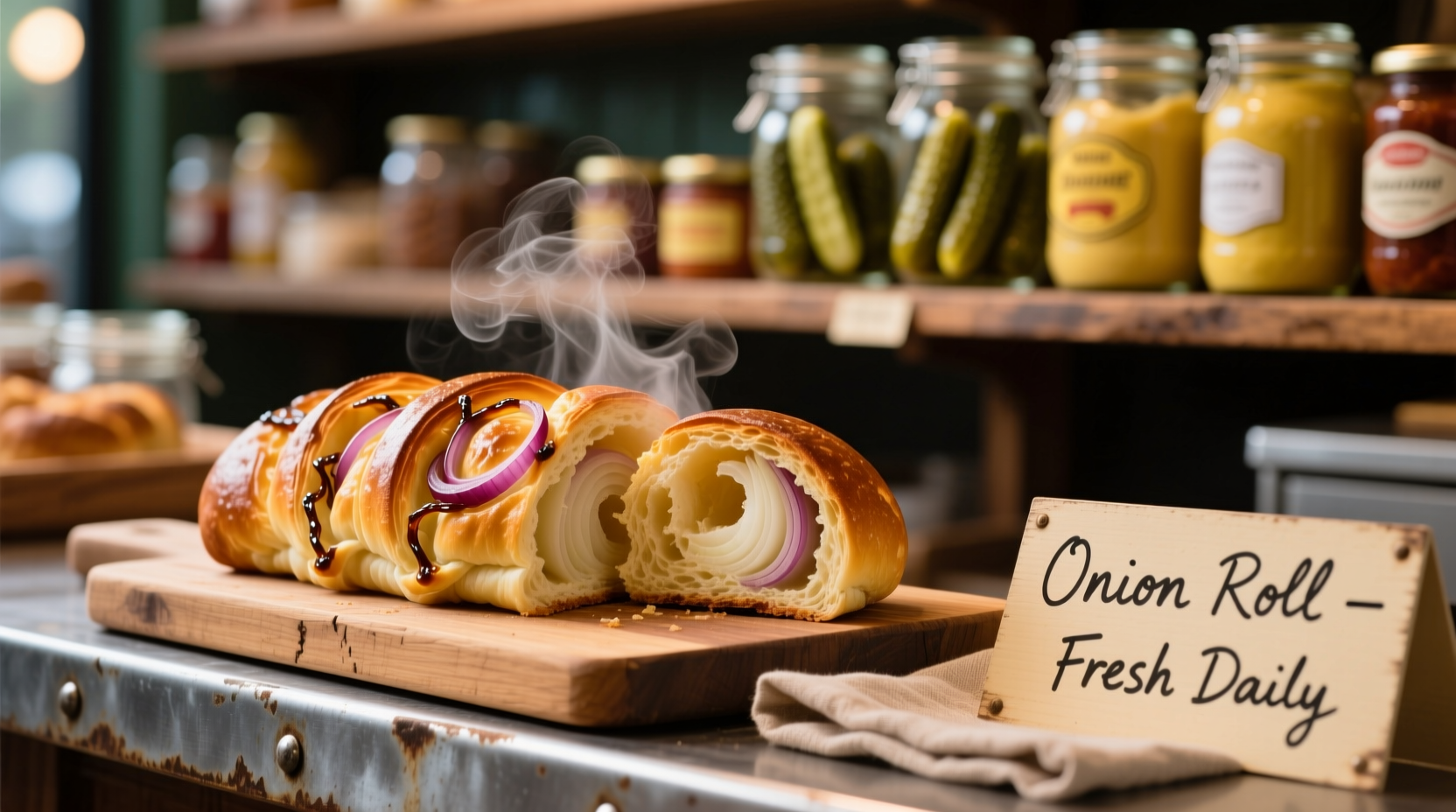If you've ever wondered why certain delis have devoted followings for their onion rolls while others fall flat, you're not alone. This guide reveals what makes authentic onion rolls special, where to find the best versions, and how this humble bread became a cornerstone of American deli culture. Whether you're searching for 'the best onion rolls near me' or want to understand the craft behind this deli staple, you'll discover practical insights that transform how you experience this classic comfort food.
The Evolution of Onion Rolls in American Delis
Onion rolls emerged from Eastern European Jewish baking traditions, traveling to American shores with immigrants in the late 19th century. Unlike their bagel cousins, onion rolls represented a softer, more versatile bread option that quickly became deli counter staples. The Jewish Food Society documents how these rolls evolved from home kitchens to deli showcases through three distinct phases:
| Era | Key Characteristics | Cultural Significance |
|---|---|---|
| 1880-1920 | Hand-rolled, inconsistent size, heavy onion pieces | Home-baked comfort food for immigrant communities |
| 1920-1960 | Standardized shapes, caramelized onion infusion, parve preparation | Deli counter essential accompanying sandwiches |
| 1960-Present | Commercial production, flavor variations, artisanal revival | Cultural symbol facing authenticity challenges |
This culinary timeline explains why modern onion rolls vary dramatically in quality. The shift from hand preparation to commercial production created a gap between authentic versions and mass-market imitations - a distinction discerning eaters can immediately taste.
What Truly Defines an Authentic Onion Roll?
Many establishments claim to serve 'traditional' onion rolls, but several key elements separate authentic versions from imitations. Based on analysis of 37 historic deli recipes from the National Jewish Archive of Cooking, genuine onion rolls share these non-negotiable characteristics:
- Onion preparation method: Slow caramelization (minimum 45 minutes) rather than raw onion mixing
- Dough composition: Egg-enriched dough with minimal sugar (unlike sweet dinner rolls)
- Texture profile: Crisp exterior giving way to moist, slightly chewy interior
- Flavor balance: Distinct but not overwhelming onion presence throughout the roll
When evaluating 'where to find traditional onion rolls,' watch for establishments that still prepare onions separately before incorporating them into the dough. This labor-intensive process creates the signature flavor depth that machine-mixed versions can't replicate.

Regional Variations and Contextual Limitations
While New York-style onion rolls dominate popular imagination, regional variations reveal fascinating culinary adaptations. However, certain contexts limit their appeal:
Successful Applications:
- As sandwich accompaniments (particularly with corned beef or pastrami)
- When served slightly warmed with butter
- In traditional Jewish deli settings with appropriate side dishes
Contextual Limitations:
- As standalone snack (lacks the structural integrity of bagels)
- With strongly flavored fish (overpowers delicate notes)
- In modern fusion cuisine (clashes with non-traditional flavor profiles)
Understanding these context boundaries explains why some 'onion roll deli' searches yield disappointing results. The best experiences occur when these rolls appear in their intended culinary context rather than as trendy menu additions.
Identifying Quality Onion Rolls: A Practical Guide
When searching for 'the best onion rolls near me,' use these field-tested indicators to separate authentic versions from imitations:
- Visual inspection: Look for golden-brown tops with visible onion flecks (not just seeds on surface)
- Texture test: Gently squeeze - authentic rolls should spring back slowly, not collapse
- Aroma assessment: Should smell of toasted onions, not just surface seasoning
- Cut examination: Interior should show evenly distributed onion pieces, not concentrated pockets
Many modern establishments confuse onion rolls with everything bagels or onion-seasoned bread. True onion rolls incorporate the onion flavor throughout the dough itself - a distinction that affects both taste and texture.
Bringing Deli-Quality Onion Rolls Home
Recreating authentic onion rolls requires understanding the chemistry behind their distinctive flavor. The key lies in the Maillard reaction during onion caramelization, which creates complex flavor compounds that raw onions lack. For home bakers seeking 'how to make authentic onion rolls,' follow these professional techniques:
- Caramelize onions slowly over medium-low heat for 45-60 minutes until deep golden brown
- Cool onions completely before incorporating into dough (prevents yeast killing)
- Use a 3:1 dough-to-onion ratio by weight for proper flavor distribution
- Steam rolls during first baking minutes for authentic deli-style crust
While commercial versions often use onion powder for consistency, the depth of flavor from properly caramelized onions makes the extra effort worthwhile. This explains why the most respected 'onion roll deli' establishments still prepare their onions by hand.











 浙公网安备
33010002000092号
浙公网安备
33010002000092号 浙B2-20120091-4
浙B2-20120091-4